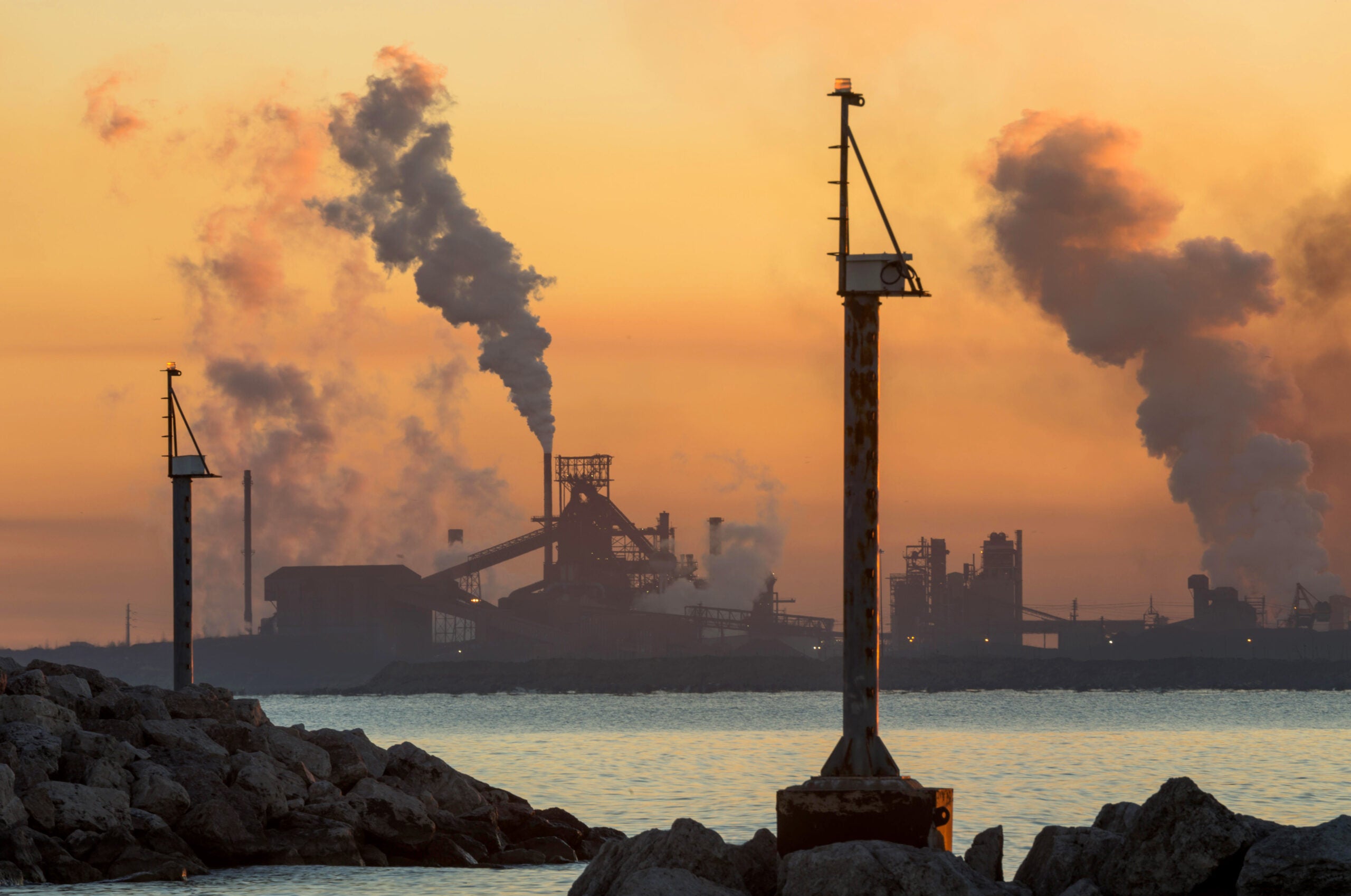Final Steel Mill Rule Will Prevent 64 Tons of Hazardous Air Emissions Annually
Victory
—Despite significant industry pushback, EPA takes important step to regulate steel production, one of the worst sources of toxic heavy metal air pollution
Contact
Today, the Environmental Protection Agency (EPA) published a final air pollution rule that begins to address the urgent need to protect communities neighboring steel mills. According to the agency, this updated rule will reduce 64 tons of hazardous air pollutants and 470 tons of fine particulate matter per year. Studies show that people working in steel mills have an increased risk of developing mesothelioma, an extremely aggressive form of lung cancer.
The nation’s eight integrated iron and steel mills, some of which have been operating continuously for a century or more, emit hundreds of tons of arsenic, lead, and other highly toxic metals into neighboring communities each year. The newly finalized EPA rule will require modest but badly needed reductions in this pollution.
“Exposure to emissions from steel mills, which include lead and arsenic, cause terrible health effects, like cancer, and does permanent and irreversible developmental harm to children,” said Earthjustice Director of Clean Air Practice, James Pew. “Families living near steel mills should not have to suffer from lifelong health impacts because of the onslaught of pollution from these facilities. Parents deserve to know that their children are safe. Parents having that peace of mind is invaluable and that peace of mind is invaluable.”
This final rule will result in significant public health benefits. EPA estimated the net benefits of reducing PM2.5 from integrated iron and steel manufacturing facilities could be as high as $3.7 billion from 2026 to 2035.
The new health protections come at a minuscule cost to the steel companies, approximately $6.7 million annually. To put this cost in perspective, it is a tiny fraction of the billions of dollars the companies have spent on buying back their own stock in recent years and an even smaller fraction, less than 0.02%, of their annual revenues of $40 billion last year.
Everyone is vulnerable to the hazardous impacts of steel production, especially steel mill workers and communities living near these facilities. EPA’s own demographic analysis shows 27% of people living within 3 miles of a steel mill are Black, despite making up only 14% of the share of the total U.S. population.
Quotes from our clients and partners:
“Residents of Southwestern Pennsylvania deserve to live lives free of high risks from cancer, cardiovascular disease, lung disease, asthma, among many other impacts for toxic air pollution,” said Matthew Mehalik, Executive Director of the Breathe Project in Pittsburgh. “Stronger rules on polluting steel facilities mean better lives and better facilities.”
“Steel corporations have all reported record profits in the past several years and can easily afford to comply with reasonable laws to protect the health of environmental justice communities like Northwest Indiana, long suffering from the devastating impacts of toxic air pollution from the steel industry,” said Susan Thomas, Legislative and Policy Director for Just Transition Northwest Indiana.
“Gary is a majority minority city recognized as an environmental justice community that is disproportionately impacted by over 100 years of historic and current pollution from U.S. Steel, Gary Works. A 15% reduction is not even enough when talking about hazardous air pollutants that have serious health impacts and that residents have been exposed to for a lifetime,” said Dorreen Carey of Gary Advocates for Responsible Development. “While U.S. Steel and shareholders have prospered, they continue to rob Gary of the health of its residents, the protection of our natural resources, and opportunity for growth and revitalization.”

Additional Resources
About Earthjustice
Earthjustice is the premier nonprofit environmental law organization. We wield the power of law and the strength of partnership to protect people's health, to preserve magnificent places and wildlife, to advance clean energy, and to combat climate change. We are here because the earth needs a good lawyer.